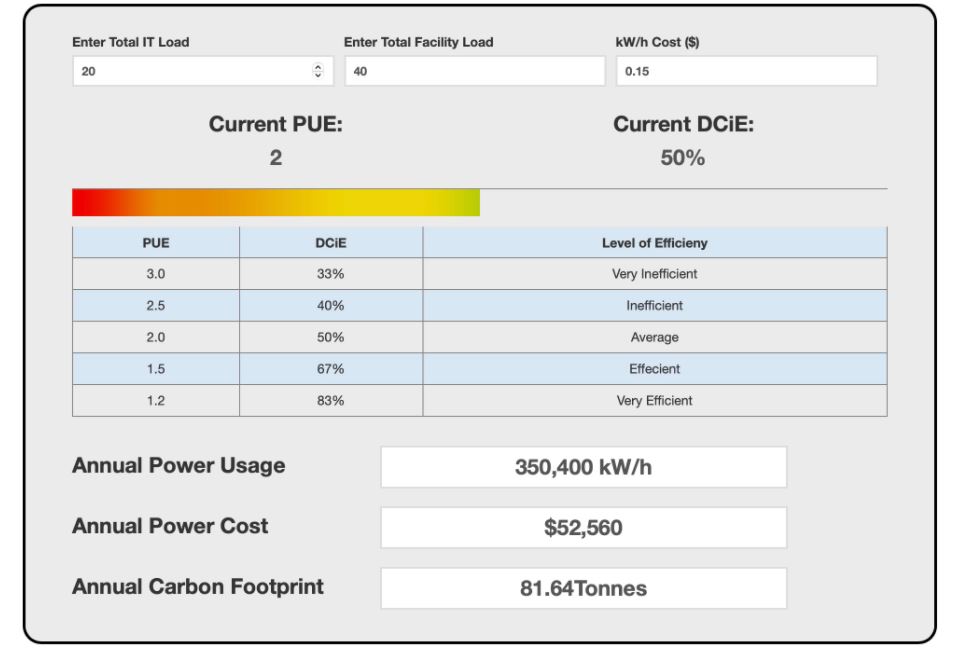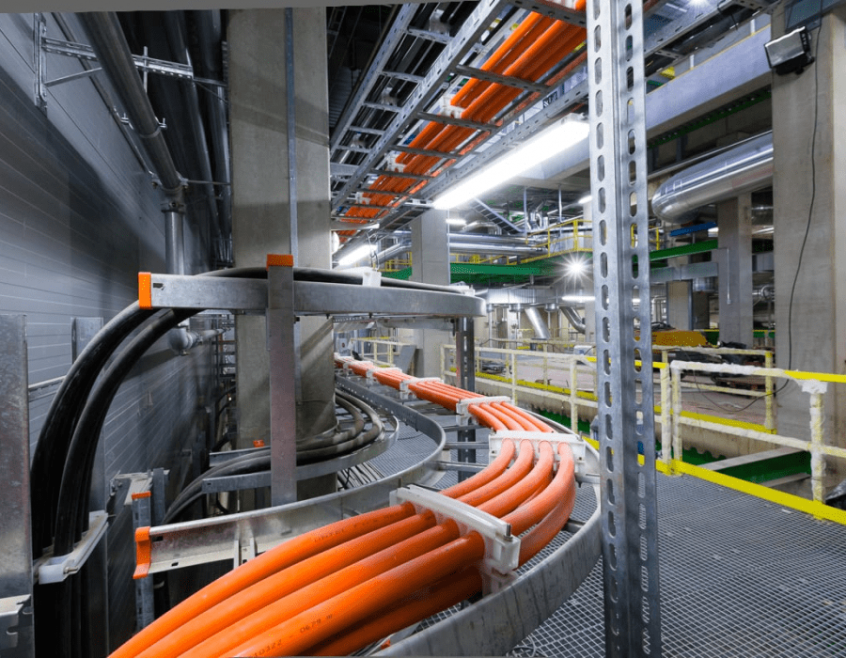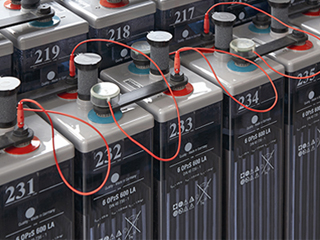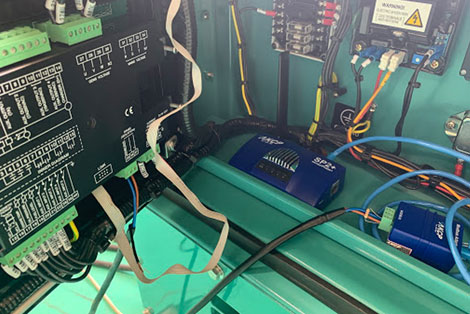Importance of PUE on Data Center Costs: Optimizing Efficiency and Reducing Expenses
Efficiency measurements like Power Usage Effectiveness (PUE) play a crucial role in assisting data center owners and operators in identifying areas for improvement. PUE not only helps in evaluating a data center’s environmental impact and carbon footprint but also aids in identifying cost-saving measures. In this article, we will explore the significance of PUE, how to calculate it, and techniques to lower it for improved data center performance and reduced operating costs.
What is PUE and its Importance
Power Usage Effectiveness (PUE) is a metric used to assess a data center’s energy efficiency, measured on a scale of one to three, with one being the most efficient. A lower PUE indicates a more efficient data center, leading to reduced operating costs for both the operator and clients. PUE is critical in identifying the environmental impact and energy efficiency of a data center, making it an essential aspect for both businesses and the environment.
How to calculate PUE
To calculate PUE accurately, data center operators need to consider various factors, including power consumption, customer equipment usage, shared overhead costs, and utility feeds. Understanding how PUE is derived allows data center managers to make informed decisions and implement strategies to improve energy efficiency.
 The below diagram illustrates the percentage of data centers operating at specific PUE. As per the uptime institute, the majority of data centers (47%) operate a PUE of 1.2-1.5. 38% are in the 1.5-2.0 range. This 38% of data centers could likely do some simple improvements to their data center, such as aisle containment and turning up the thermostat. This would result in lower PUE and cost savings. You can use our free online PUE calculator to see how much you can save by improving your energy efficiency.
The below diagram illustrates the percentage of data centers operating at specific PUE. As per the uptime institute, the majority of data centers (47%) operate a PUE of 1.2-1.5. 38% are in the 1.5-2.0 range. This 38% of data centers could likely do some simple improvements to their data center, such as aisle containment and turning up the thermostat. This would result in lower PUE and cost savings. You can use our free online PUE calculator to see how much you can save by improving your energy efficiency.

Photo Credit: uptimeinstitute.com
How Can Data Centers Lower Their PUE?
There are several effective techniques to reduce PUE and enhance energy efficiency in data centers:
- Temperature Optimization: Raising the temperature within the facility to the recommended levels by ASHRAE can significantly improve energy efficiency without harming IT equipment. Read – What Temperature Should my Data Center be?
- Aisle Containment: Implementing hot or cold aisle containment prevents the mixing of hot and cold air, improving cooling efficiency and reducing energy consumption. Read – Data Center Containment Myths
- Free Cooling: Leveraging free cooling in colder regions can reduce reliance on energy-hungry cooling systems and contribute to substantial energy savings.
- Electricity Distribution: Utilizing high-efficiency UPS systems and eliminating unnecessary voltage converter stages reduces power loss and cooling load, resulting in cost savings.
Drawbacks in Measuring The PUE?
While PUE is a valuable tool for data center facilities departments, it can sometimes lead to unintended consequences. Lowering PUE without strategic planning may result in reduced availability and unanticipated outcomes. Therefore, data center administrators must carefully consider the impact of changes to ensure they align with energy efficiency goals. Some drawbacks to focusing too much on PUE are enumerated below.
- Focus on Power, not Performance: PUE primarily measures the efficiency of the data center’s power usage. It does not provide insight into the overall performance of the data center, such as its computational efficiency, the effectiveness of cooling systems, or other critical factors that impact the data center’s functionality.
- Doesn’t Account for Different Workloads: PUE treats all data centers as if they have the same workloads, regardless of their specific applications or IT equipment. In reality, data centers can vary significantly in terms of the type and intensity of workloads they support.
- Variation in Climate and Location: PUE does not take into account the geographical location of data centers and the local climate conditions. Data centers in different regions may require varying levels of cooling, which can significantly affect their overall efficiency.
- Limited Scope: PUE only measures energy efficiency within the data center facility itself and does not account for the energy consumed by the IT equipment or other infrastructure components outside the data center building, such as network and storage.
- No Consideration of Redundancy: PUE does not account for redundancy levels within a data center. Data centers with higher redundancy levels (e.g., N+1 or 2N) may have higher energy consumption due to redundant systems, but PUE does not differentiate between them.
- Lack of Industry Standardization: While PUE is widely used, there is no universal standard for calculating it. Different organizations may calculate PUE differently, leading to inconsistencies in reported values.
- Seasonal and Dynamic Changes: PUE values can vary throughout the year and even throughout the day, depending on factors like outside temperature, IT load, and the efficiency of cooling systems. Static PUE measurements may not capture these fluctuations.
- Focus on Energy, not Environmental Impact: PUE is primarily an energy efficiency metric and does not consider other environmental impacts such as water usage, e-waste, or the source of energy (e.g., renewable vs. non-renewable).
- Ignores IT Equipment Efficiency: PUE doesn’t account for the energy efficiency of the IT equipment itself, which is a significant contributor to a data center’s overall energy consumption.
- May Encourage “Greenwashing”: Some data centers may focus solely on improving their PUE without making substantial improvements in other areas of environmental sustainability. This can lead to a superficial emphasis on energy efficiency while neglecting other important aspects of responsible data center operation.
While PUE is a valuable tool for assessing the energy efficiency of data centers, it should be used in conjunction with other metrics such as WUE to provide a more comprehensive view of data center performance and sustainability.
Cascade Effect of Other Metrics?
AKCP Online PUE Calculator
Not sure what your PUE is, or want to benchmark your performance? Checkout our free online PUE calculator tool.
But how do you go about making these savings and implementing the changes in your data center that are required? AKCP has a wide range of sensors for your data center including cabinet thermal maps and differential air pressure sensors. These sensors allow you to make changes in your data center and with AKCPro Server see in real-time the effect it has on your PUE. You can ensure that your data center is running at optimal condition, without violating ASHRAE recommended rack inlet temperatures and ∆T as well as ∆P values.

Online Power Usage Effectiveness Calculator
Conclusion
Power Usage Effectiveness (PUE) is a crucial metric for evaluating data center energy efficiency and reducing operational costs. By adopting various techniques such as temperature optimization, aisle containment, and free cooling, data centers can significantly improve their PUE and overall energy efficiency. It’s also essential to consider the cascade effect of reducing the IT load, which can lead to substantial energy savings. To achieve these goals effectively, data center operators can rely on AKCP’s comprehensive ecosystem of products, including cabinet thermal maps, power monitoring sensors, and AKCPro Server, to track and optimize their energy usage and improve their PUE.







